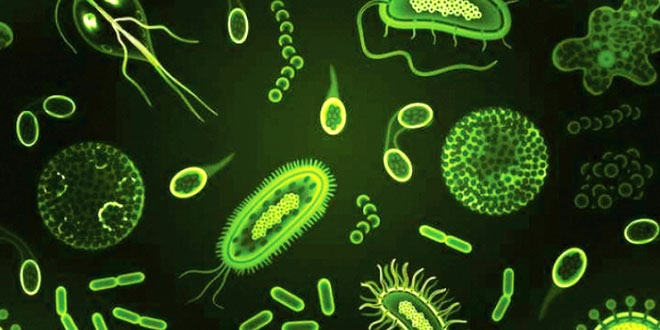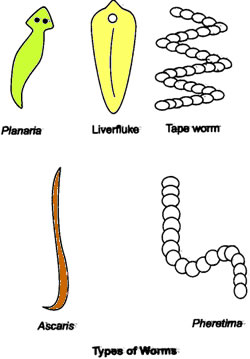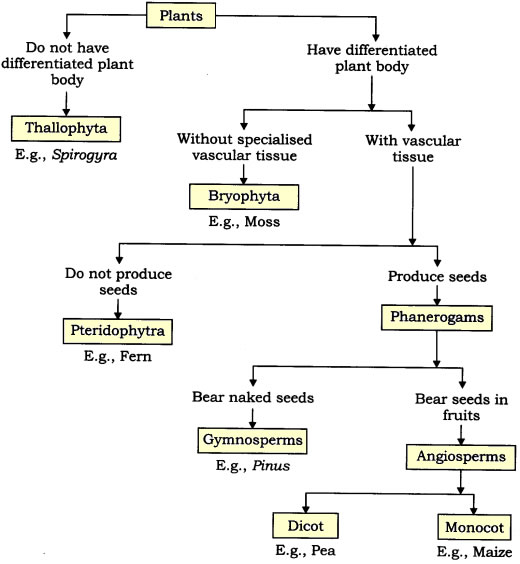Question: Why do most of the amphibians lay their eggs in water and reptiles lay their eggs on land?
Answer: Amphibians lay their eggs in water because the tadpole or young, ones that hatch out of egg has gills at initial stages, that allows them; to breathe in water.
In case of reptiles the young ones that hatch out does not have gills and the hatching of eggs requires warmth that is given by the mother reptile.
Question: Give the hierarchy of 5 kingdom classification of living world.
Answer:

Question: What is the importance of classification?
Answer: Classification is important because:
- Classification makes the study of wide variety, of organisms, systematic and easier.
- It projects a picture of all organisms and their interrelation with each other.
- It provides a base for the study of other branches of biology.
- It is useful in the study of ecology, which deals with; the inter-relation of an organism with their environment.
- It helps to establish a hierarchy of groups of organisms.
Question: What are the characteristic features of mammals?
Answer: Characteristics features of mammals:
- Body is covered with hair.
- Skin is provided with sweat and sebaceous glands.
- Heart is four-chambered.
- Fertilisation is internal.
- Females have mammary glands to produce milk to nourish their young ones.
- External ear—pinna, present.
- Eyes have eye lids.
- Warm-blooded.
- Respiration through lungs,
- Body cavity divided into- thorax and abdomen by muscular diaphragm.
Question: What are the characteristic features of reptiles?
Answer: The characteristics of reptiles:
- Dry scaly, impermeable skin.
- Respiration through lungs.
- Cold-blooded
- Internal fertilisation.
- Heart is three chambered.
- Two pairs of pentadactyl limbs are present.
Question: What are the basis for classification of organisms?
Answer: The basis for classification are:
- Presence or absence of nucleus.
- Organisms are unicellular, or multi-cellular.
- Level of organisation.
- Autotrophic mode of nutrition or heterotrophic mode of nutrition.
- Of the organisms that perform photosynthesis (Plants), their level, or organisation of the body.
- Of the animals, how does the individuals body develop and organise its different parts.
Question: Give the characteristics of fiat worms, round worms and segmented worm. Give their phylum.
Answer:
Question: Give the classification of plant kingdom.
Answer:
 Class Notes NCERT Solutions for CBSE Students
Class Notes NCERT Solutions for CBSE Students







